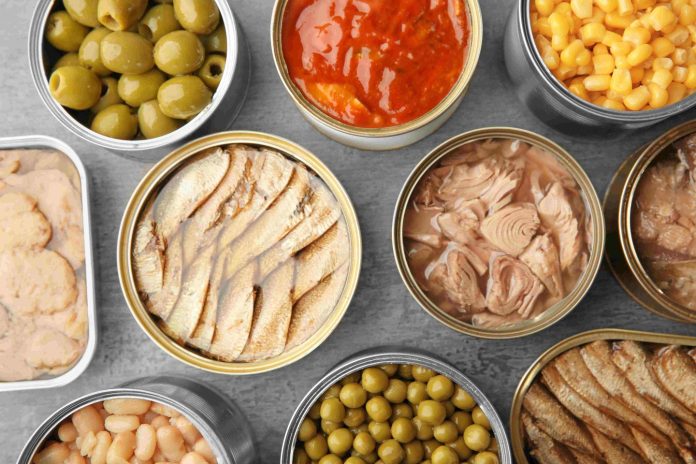
The prevalence of NCDs has been rising around the world and this has been a worrying trend. In 2021, noncommunicable diseases (NCDs) caused the deaths of at least 43 million people worldwide.[1] In Malaysia, over half a million adults live with four major NCDs namely diabetes, hypertension, high cholesterol and obesity.[2] Although there are many factors that contribute to NCDs, in recent years, ultra-processed foods (UPFs) have gained momentum as one of the more talked about culprits implicated in this saga.
However, the UPF label itself is far from refined and has raised much debate among food scientists, food technologists, and the health and nutrition community. But what is it and where did it come from?
The ultra basics
Between 2008 to 2010, a group of Brazilian scientists observed significantly rising obesity rates in children in the country. At the same time, they observed high per capita consumption of sugary drinks in another country, Mexico. This led to them to put forward the hypothesis that the rate of obesity was connected to highly-processed foods and sugar-sweetened beverages (SSBs).
Subsequently in 2010, they published a series of papers which presented the four groups of the NOVA (or new) classification.
Group 1 encompassed unprocessed and minimally processed foods. These were edible parts of plants (fruits and vegetables), animals (meat) and microbes that were not processed or minimally processed using methods designed for preservation and making food pleasant for consumption (e.g., crushing, size reduction, drying, chilling, freezing). Pasteurised foods and juices were also categorised into this group.
Group 2 was processed culinary ingredients. These were substances obtained directly from Group 1 and used to prepare, season and cook Group 1 foods.
Processed foods fell under Group 3. These were products made from Group 1 that had gone through preservation methods such as canning, brining and fermentation. Examples were canned foods, bottled brined vegetables, fruits in syrup, ham, bacon, cheese, freshly baked goods such as breads, cookies and cakes.
Lastly, in Group 4, were the ultra-processed foods (UPFs). These were defined as formulations of ingredients mostly exclusively used in industry. UPFs were made by a series of industrial processes, many requiring sophisticated equipment and technology, hence they were “ultra-processed”. UPFs often contained chemically modified ingredients such as high fructose corn syrup and interesterified oils, that were not or rarely used in culinary cooking.

Built on good intentions
While the NOVA classification was built on good intentions to highlight and understand the relationship between food and health, the assumption – that the greater the consumption of processed foods, the greater the risk of developing chronic diseases – was based on an observation that needed more scientific rigor, says Prof Dr Christiani Jeyakumar Henry, Former Director, CNRC, A*STAR Singapore.
For example, the simplicity of the NOVA categorisation meant that infant formula and breast milk substitutes would share the same category as sugary drinks and ice cream. A fortified protein bar made with whole ingredients, and one made with high sugar and refined grains would both be categorised as UPFs.
The lack of a robust framework caused variations to the classification to be propagated, and for definitions to be based on intuition rather than scientific parameters. These have made it confusing and difficult for consumers to decipher what UPFs are and how these really affect their health.
Causality vs correlation
During the forum, it was pointed out that studies have not proven that UPFs have specifically caused NCDs but rather only shown an association and correlation. For example, a study that has been cited to prove a direct causality between UPFs and cardiovascular disease, did not exclude that the disease could have just as easily been caused by the high sugar, salt and fat content in the same foods – rather than the levels of processing.
In addition, a Singapore study involving Asian and Western foods brought surprising results. The nutritional content of dishes such as chicken rice, roti canai and nasi lemak were compared to western fast foods which were categorised as UPFs. It showed that while both the Asian and Western cuisines had similar fat content, the Asian foods, arguably less processed, were higher in calories, sodium and cholesterol – known to be contributors to obesity and heart diseases. “This shows that we cannot castigate UPFs as the culprit,” said Prof Jeyakumar.
A need for local context
While we do not have a similar study in Malaysia, this exemplified the point brought up by a panel member that the importance of defining UPFs in a community was dependent on the community’s local context. For example, if our main source of food were street food and traditional foods, it would be more useful to focus on the nutritional values of those foods rather than worrying about UPFs. The panel also highlighted that factors such as local behaviour, environment and commercial determinants of health played a crucial role in shaping the risk of any disease.
Prof Ir. M Aman Wirakartakusumah, Rector, IPMI Institute, Indonesia, highlighted that for some groups, prepacked UPFs might be the most important source of macro- and micro-nutrients. For example, in Indonesia, a group of people was studied, and it was found that 20% of their calorie intake came from UPFs which also contributed to 20% of their protein intake.
Prof Winnie Chee, Head of the Centre for Transformative Nutrition and Health at the IMU University, adds that, “In Malaysia, we are faced with the double burden of under- and over-nutrition.” As a dietitian, fortified foods (which would be categorised as UPFs) are often prescribed to help patients with nutrient deficiencies and imbalanced diets – for example foods for special medical purposes such as oral nutrition supplements which are important for malnourished patients. “If the manufacturers stop making these foods, we would not be able to treat these patients,” she says. This was a sentiment echoed by panel members.
The necessity of processing
Processing has also helped us to prevent contamination and extend shelf life especially in areas without good refrigeration and food handling methods. Canning, vacuum packaging, fermentation – ensure food security and safety and decreases food waste. Food processing also has huge potential in sustainability for the future – enabling the production of foods that may release less greenhouse gasses and are less harmful to the environment.
This, says Prof Aman, is the reason why we should not dismiss all processed food. Instead, we should focus on improving food processing methods and ensuring responsible processing as opposed to overprocessing.
A more robust NOVA
How do we move forward from here? Firstly, we need better classification. “The simplicity of the NOVA classification has made it popular, but it has confused consumers and demonised all processed foods,” says Prof Jeyakumar, stressing that it is imperative that the classification be defined and refined in a manner that consumers anywhere in the world can comprehend its meaning and applications.
This will mean scientific research that focuses on developing a more precise food classification model that is multifaceted – one that considers nutritional composition, processing methods, food additives and their impact. “A multi-factor classification model would provide a clearer picture of which processes are beneficial, natural or harmful…it will give us better understanding and move us beyond simplistic labels to give us a system that supports both public health and food security,” Prof Aman says.
Currently, the International Union of Food Science and Technology (IUFoST), the global voice of food science and technology, has set up a taskforce to dive deep into the classifications and to tease out the intricacies of processed foods. This would be one of the steps to a better understanding of UPFs.
It starts with us
While the scientists are hard at work, as consumers, we too must take responsibility for our health. The first step is to educate ourselves on how to read food labels. We need to move past misleading marketing claims like “all natural” or “low fat” – that can give false impressions that a food is healthy – and learn to interpret nutritional facts and ingredient lists.
Food literacy can and should be incorporated into school curriculum. Online tools and apps should be developed to provide live breakdowns of a product’s nutritional value to help consumers immediately understand what they are eating.
On the other hand, consumer behaviour is also largely influenced by what is available in the market, as pointed out by some members of the panel. The discussion highlighted the need to look for ways to make healthy food more affordable and available. In this aspect, food manufacturers play a significant role in shaping consumer choices and, as the panel agreed, are already looking for ways to offer healthier choices by reformulating products to reduce sugar, sodium and unhealthy fat.
“If we align industry incentives with public health goals, we can drive real change,” says Prof Aman highlighting that governments can look at subsidies to support healthier manufacturing.
Embracing the process
The debate remains complex. While some believe UPFs are the leading cause of diet-related diseases others argue that UPFs serve an important role in food security by making food more affordable, accessible and safe for millions of people worldwide.
It is clear though that food processing is here to stay, and panel members were in agreement that it is not realistic or necessary to eliminate all processed food. Rather, there is a need to promote a balanced diet instead of propagating fear-based narratives.
“The entire food environment and ecosystem should support healthier eating habits,” says Prof Winnie. “To do this we will need the collaboration of all stakeholders – from consumer, manufacturers, scientific community and government – to refine the definitions, advocate responsible processing and increase the awareness of healthy lifestyles.”
The panel concluded that a continuous series of discussions with stakeholders and the Ministry of Health will enable Malaysia to unravel the complexities of the UPF landscape and become a thought leader in this important but confusing narrative.
“It’s a process, but it will be worth it for us, our children and for the future,” Prof Winnie adds.
————————–
Beyond the Label: The Ultra-Processed Foods (UPFs) Debate Forum was held on 20th February 2025 at the IMU University. Organised by the university, the forum kicked off with presentations by Prof Dr Christiani Jeyakumar Henry, Former Director, CNRC, A*STAR Singapore and Prof Ir. M Aman Wirakartakusumah, Rector, IPMI Institute, Indonesia. This was followed by a panel debate moderated by Prof Winnie Chee, Head of the Centre for Transformative Nutrition and Health, IMU University. The panel brought together experts and industry stakeholders, namely: Mr Geoff Smith, CEO, International Life Sciences Institute (ILSI); Dr Feisul Mustapha, State Director, Perak and Public Health Physician; Sharidah Yusoff, Vice President, Malaysian Institute of Food Technologists; Wong Mei Ching, Food Manufacturers Malaysia (FMM); Dato Indrani Thuraisingham, Vice President, Federation of Malayisan Consumers Associations (FOMCA); and Tee E Siong, Nutrition Society Malaysia.
———————————————————————–
[1] https://www.who.int/news-room/fact-sheets/detail/noncommunicable-diseases
[2] Over half a million Malaysians live with non-communicable diseases, according to survey | The Star



